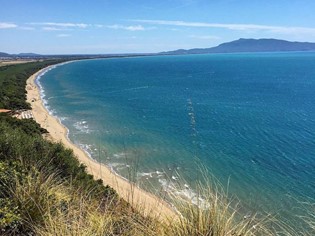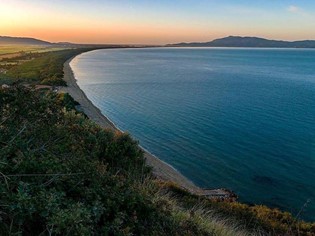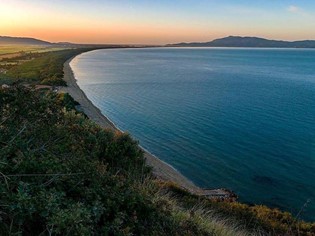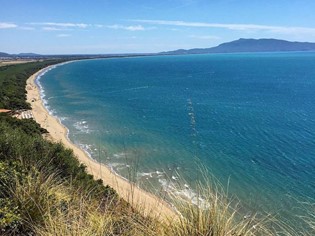LA PIANA DELL'ALBEGNA
The road runs near the sea, alongside the beautiful pine forest, before crossing the mouth of the Alghero, almost dry in the summer but subject to strong winter waves that have contributed to forming the tomboli of the Orbetello Lagoon. The plain formed by this river and the Osa constitutes a reclaimed area since 1931 with works of water regimation, consolidation and reforestation of the marine dunes and the plantation of the coastal pines for the defense of the internal crops. Near the Albegna, on the left bank, is the Forte delle Saline complex, which was of great importance both for the control of the salt extraction and as a river port: it is a Siena square tower of the fifteenth century, then embedded by the Spaniards in a fort with bastioned walls. Albinia diverges to the right on the Argentario road, built on the tombolo della Giannella, while on the left is the Maremmana road, which leads to the Marsiliana castle after leaving the road to Magliano in Tuscany. Marsiliana is an ancient castle that emerges on top of a hill covered with woods and Mediterranean scrub, stretched out on the valley of the Albuegna. Archaeological excavations carried out in the area around the fortification have brought to light numerous and rich necropolises referring to an important Etruscan center of the Orientalizing period, supposedly destroyed by the town of Vulci in the second half of the 6th century BC. Tradition identifies it with Caletra, cited by Livio and Pliny to designate the territory between Albegna and Fiora. The importance of this settlement is documented by the opulence of the found burial corpses, among which the famous Corsini fibula (VIII-VII century BC now kept at the National Archaeological Museum in Florence), a masterpiece of Etruscan goldsmith art, belonging to a character of high rank, as evidenced by the finding of the remains of the war chariot.



